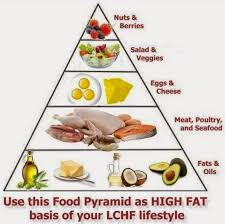86Thousand400: Tim Noakes, Nutrition
- 86thousand400
- May 14, 2018
- 2 min read
Blood parameters that best indicate overall health status
Markers of Abnormal Carbohydrate Metabolism
- Body weight/BMI/% body fat
- Blood Pressure
- Blood glucose concentration
- Blood insulin concentration
- Blood glucose tolerance test
- Blood HbA1c concentration
- Blood ketone body concentration
- Blood HDL-cholesterol concentration
- Blood triglyceride concentration
- Blood Uris acid concentration
- Presence of non-alcoholic fatty liver on ultrasound
Abnormal Lipoproteins
- Blood concentration and number of small LDL cholesterol particles
- Blood Apo-B concentration
Markers of Inflammation
- Blood ultrasensitive CRP concentration
- Blood or tissue omega-3/omega-6 ratio
- Blood Fibrinogen concentration - clotting factor
- These are the variables that need to be measured. The greater the number of normal results, the lower one's risk, as the fewer the abnormalities that are detected, the lesser the degree of IR, which is the real driver of abnormalities in all these tests
- The greater the number of abnormal test, the greater the degree of IR and the greater the need to reduce the number of grams of carbohydrate eaten to an absolute minimum, preferably less than 50g/day
- It is not just about heart disease
- T2DM does not only increase one's risk for developing arterial damage and coronary heart disease; those with T2DM are also at greatly increased risk for the development of cancer and dementia like Alzheimer's disease
- Chronically elevated blood glucose concentrations might also promote those diseases?
- Elevated blood glucose was a predictor for risk of dementia in both those with and without T2DM; so the higher the average blood glucose concentration, the greater the risk for dementia. So if you want to protect your brain, you need to keep your blood glucose concentration down
- There is growing evidence that the key abnormality in cancer is an increased capacity to utilise glucose
- Cancer cells do not have the capacity to use any fuel for their growth other than glucose
- Cancer cells have an absolute requirement for glucose. Without glucose they starve to death, a point first realised by Dr OTto Warburg, who won Nobel Prize in 1931
- 1977 USDGA must also have contributed to the growing incidence of cancer and dementia since 1977
Final Graphs
- Greatest survival occurs in those who have a combination of high blood HDL-cholesterol and low triglyceride concentrations
- Worst survival occurs in those with the opposite - low blood HDL-cholesterol and high blood triglyceride concentrations
- LCHF diet produces the former (favourable) combination whereas the HCLF diet produces the unfavourable combination of low blood HDL-cholesterol and high triglyceride concentrations especially in those who are the most insulin resistant
- The study of Jeff Volek and his colleagues (2008) showed that subjects who lost weight on the LCHF diet showed greater changes in all measured coronary risk factors than did those eating a hypocaloric HCLF diet
- Note that the LCHF reduces, whereas the HCLF diet increases the number of small dense LDL-cholesterol particles that are associated with arterial damage. Total blood saturated fats also fall more on the LCHF than on the HCLF diet. Only the LCHF increases blood HDL-cholesterol concentrations and reduces the blood ApoB/ApoA-1 ratio










Comments